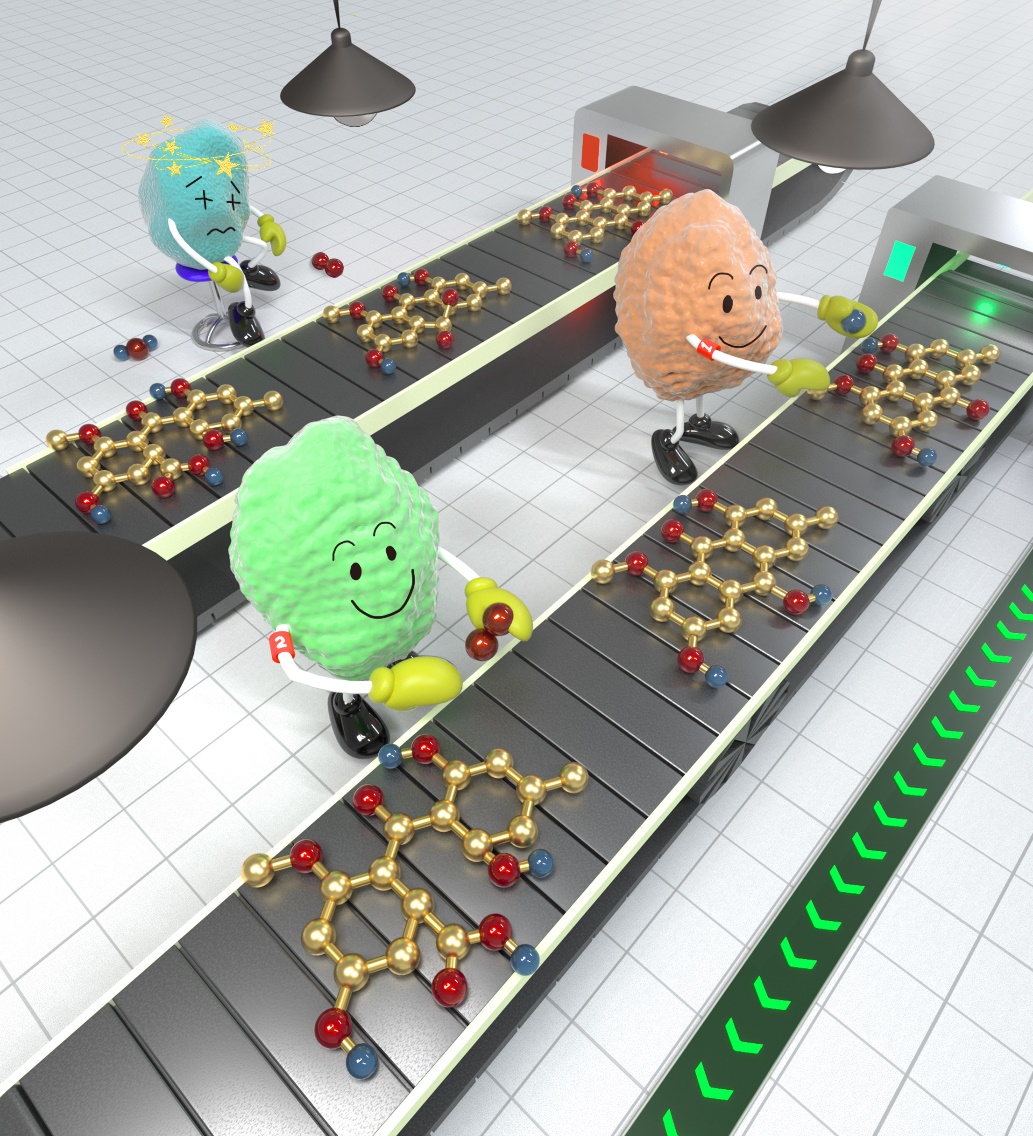Researchers Propose a Novel Mechanism of Anthraquinone Ring Opening
Anthraquinones are a class of ubiquitous natural products in fungi and plants with diverse bioactivities, including anticancer, antiviral, antioxidative and antiinflammatory activities.
Cleavage of the C10-C4a bond of the anthraquinone ring is recognized as a crucial step for initiating the structural rearrangement required to obtain numerous structurally diverse seco-anthraquinone products. However, the mechanism of anthraquinone ring opening remains elusive.
Recently, researchers from the Qingdao Institute of Bioenergy and Bioprocess Technology (QIBEBT) of the Chinese Academy of Sciences (CAS) proposed a novel bienzyme-catalytic and dioxygenation-mediated mechanism of anthraquinone ring opening.
The study was published in Journal of the American Chemical Society on Sept. 29.
Questin, a crucial anthraquinone intermediate in geodin biosynthesis, has long been considered to undergo Baeyer-Villiger (BV) oxidation to form the ring-opening product desmethylsulochrin.
In this study, the researchers investigated the enzymatic conversion from questin to desmethylsulochrin in Aspergillus terreus to elucidate the mechanism of anthraquinone ring opening. Through in vivo gene disruption, in vitro enzymatic analysis and 18O isotope labeling, they found that enzymes GedF and GedK jointly catalyzed the ring-opening process of questin.
"The long-proposed anthraquinone BV oxidative ring-opening hypothesis was revised," said Prof. LU xuefeng of Microbial Manufacturing Engineering Center (MME) at QIBEBT, the corresponding author of the study.
"Specifically, questin is reduced to questin hydroquinone by the reductase GedF in the presence of NADPH. Subsequently, the C10-C4a bond of the hydroquinone ring in questin hydroquinone is cleaved by the atypical dioxygenase GedK, giving rise to ring-opening product desmethylsulochrin," said Dr. QI Feifei from MME, the first author of the study.
Interestingly, the researchers also found that this atypical ring-opening reaction shows universality in fungal seco-anthraquinone biosynthesis.

Bienzyme-catalytic and dioxygenation-mediated anthraquinone ring opening. (Image by QI Feifei)